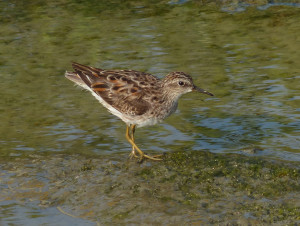
This afternoon I spent a few hours at Laem Pak Bia photographing birds. It was one of those rare times when I was out on my own so I did not have any particular need to see anything in particular, I simply enjoyed whatever species presented themselves at close range so that I could attempt to get some decent images. This I managed to do to a certain degree, limitations of the camera, photographer, light and lack of birds doing their best to put a spanner in the works but the following are some of the best photos I obtained.
The first birds I came across were a number of Marsh Sandpipers, swimming around doing their best to look like Phalaropes; this is a behaviour that is common in Marsh Sandpipers and Spotted Redshank in this area.
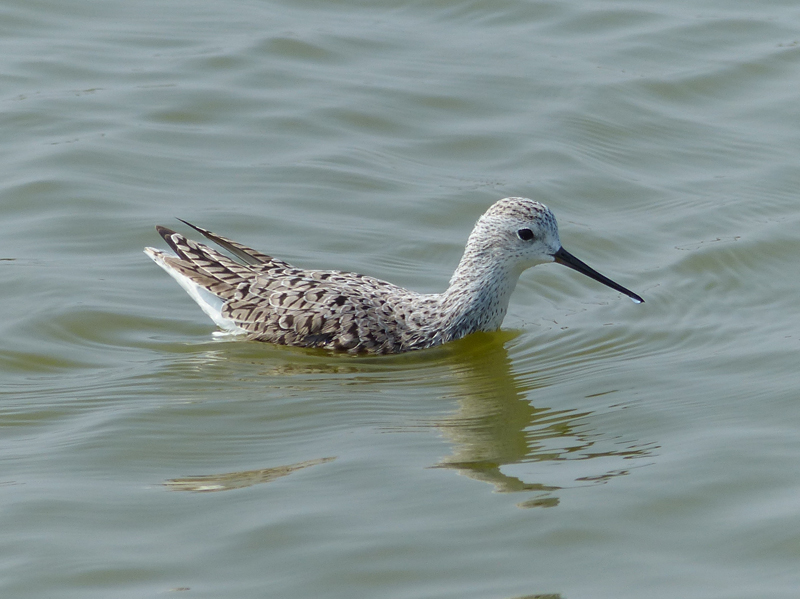 Marsh Sandpiper by Nick Upton
Marsh Sandpiper by Nick Upton
Watching the Marsh Sandpipers revealed that there were indeed several Red-necked Phalaropes among them. I counted a total of 5 Phalaropes and sitting quietly for some time resulted in a few of them coming fairly close.
 Red-necked Phalarope by Nick Upton
Red-necked Phalarope by Nick Upton
A little further along, in a ditch, were several species feeding together including a couple of Common Redshank and a Common Sandpiper. Although Common Redshank is not rare, it is usually outnumbered by Spotted Redshank at this location so it was nice to get close to this bird.
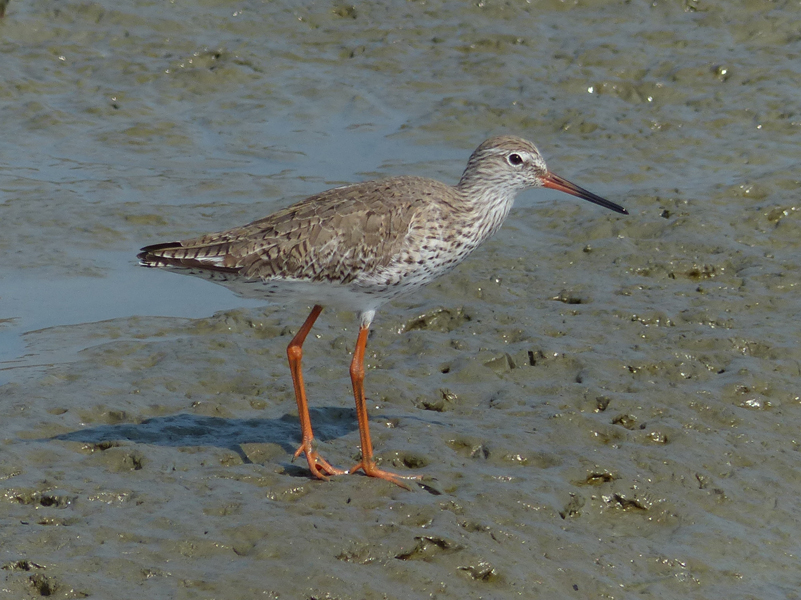 Common Redshank by Nick Upton
Common Redshank by Nick Upton
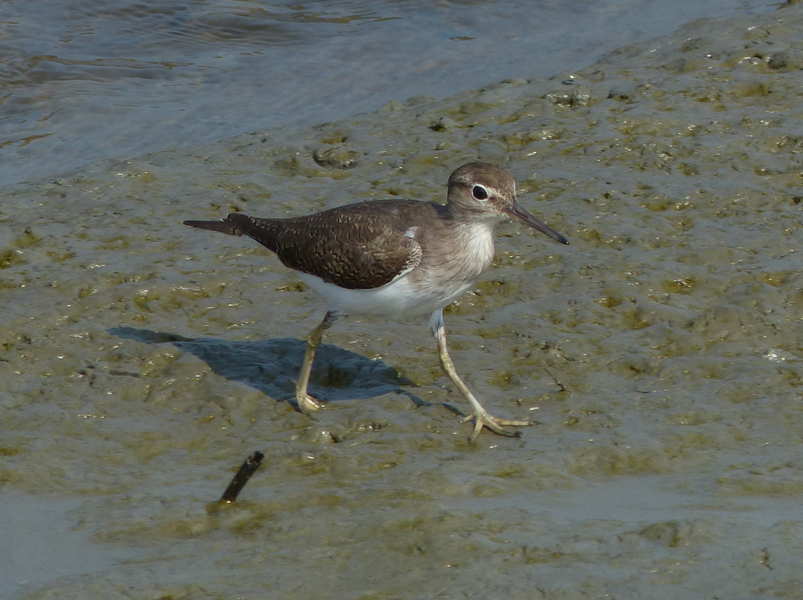 Common Sandpiper by Nick Upton
Common Sandpiper by Nick Upton
This nearby Pond Heron in non-breeding plumage presented itself so nicely that it was hard not to take a picture of it. Later in the day I was to see both Chinese and Javan Pond Herons in breeding plumage but this one remained unidentified.
 Pond Heron sp. by Nick Upton
Pond Heron sp. by Nick Upton
Long-toed Stint is species more or less restricted to East Asia and as such it is quite sought-after by visiting birders. It was nice to see this one in a ditch next to the road, even displaying its toes. Usually they are buried in the mud and impossible to observe.
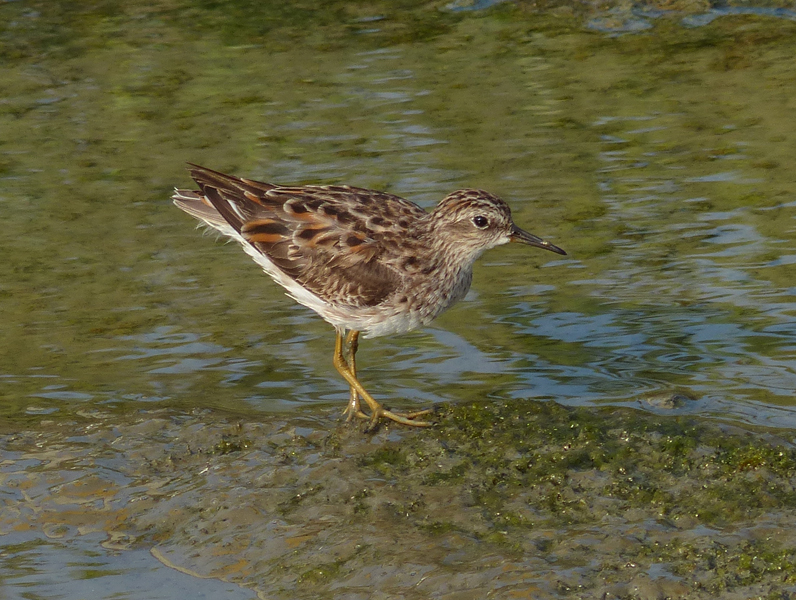 Long-toed Stint by Nick Upton
Long-toed Stint by Nick Upton
The Stint had some company in its ditch in the form of this Little Ringed Plover.These two species are often to be found in the same place as each other here, usually where the water is a less salty than elsewhere.
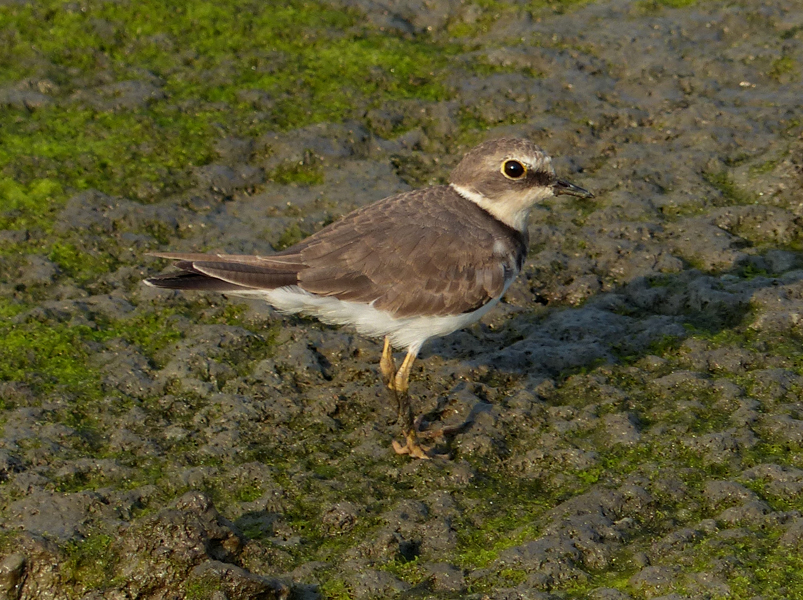 Little Ringed Plover by Nick Upton
Little Ringed Plover by Nick Upton
Next I drove into the King’s Project at Laem Pak Bia. It was disappointing to see even more works than there have been previously over the last few years and the experimental reed beds that have been so good for Crakes, Rails, Snipe and Reed warblers over the years have been completely destroyed. Hopefully they are in the process of creating even better habitat but the trend over the last few years has been to build more and more so I am not expecting anything good to happen. Still, plenty of birds lined the ponds and this Eastern Yellow Wagtail proved very approachable.
 Eastern Yellow Wagtail by Nick Upton
Eastern Yellow Wagtail by Nick Upton
Lots of Egrets and Pond Herons lined the ponds including both Javan and Chinese Pond Herons in breeding plumage – well, at least partial breeding plumage.
 Javan Pond Heron by Nick Upton
Javan Pond Heron by Nick Upton
 Chinese Pond Heron by Nick Upton
Chinese Pond Heron by Nick Upton
Moving on from the King’s Project I visited some nearby pools where I found this Wood Sandpiper taking a rest. In fact it seemed to be sleeping and didn’t move as I drove past.
 Wood Sandpiper by Nick Upton
Wood Sandpiper by Nick Upton
Nearby were large numbers of Marsh Sandpipers and a lone Pacific Golden Plover. This species is really brightly coloured although I wish it had presented itself against the water for more contrast. Still it was close enough to make a decent photo; always wonderful to see this bird at close range.
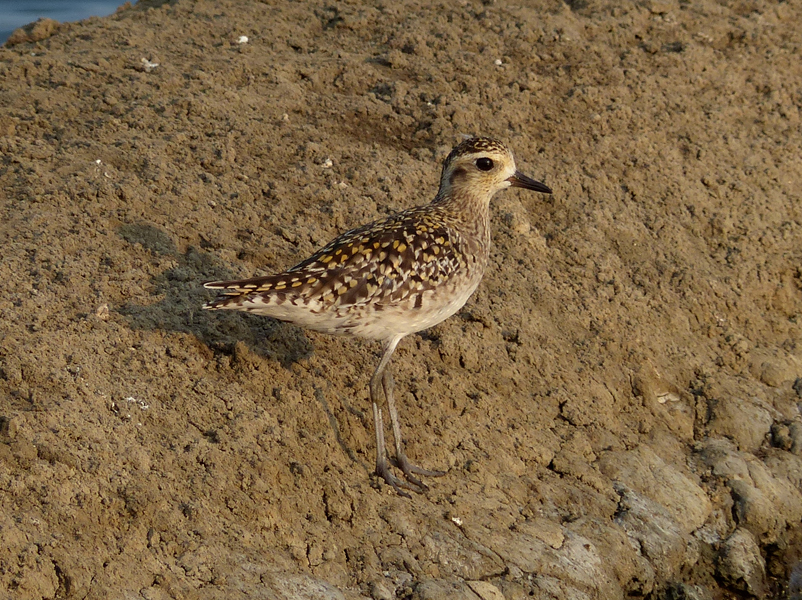 Pacific Golden Plover by Nick Upton
Pacific Golden Plover by Nick Upton
My last stop was at the rubbish tip that most local birders will know. I saw a total of 14 White-shouldered Starlings here in the late afternoon and a Eurasian Wryneck although I failed to get a decent photo of either. However, a group of Eastern Cattle Egrets were quite fun to watch as they squabbled over a pile of discarded food, which was probably meant for the stray dogs in the area.
 Eastern Cattle Egret by Nick Upton
Eastern Cattle Egret by Nick Upton
It was nice to get out and spend time observing birds at close quarters and the good news is that I get to do it all again tomorrow morning!


 March 26th, 2016
March 26th, 2016  Nick
Nick  Posted in
Posted in 









